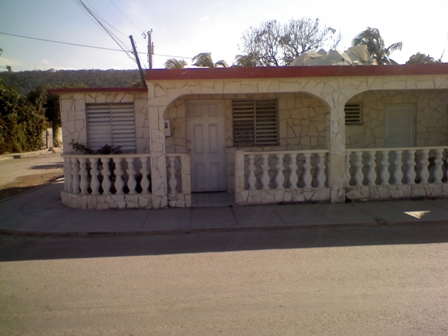Doubts about Cuba’s New Provinces
Dmitri Prieto

A while back, I wrote about how the people of Santa Cruz (the town where I live east of Havana) — through the normal democratically carried out neighborhood assembly process — prevented the specialized medical services at our hospital from being relocated to another town.
That doesn’t mean, however, that our concerns have been eliminated.
On TV they continue talking about the “regionalization, centralization and rationalization” of health care services. I beg forgiveness if I’m not completely accurate with these terms (which are also quite similar to those used by neoliberals in Latin America).
But it’s not only that.
Some months ago the decision was made to divide our province (Havana) in two. Currently the province consists of the area that surrounds the country’s capital, which since 1976 has been a separate province in itself.
Over those years we’ve gotten used to the fact that the Province of Havana (or “Havana Countryside,” as it’s sometimes called) doesn’t have a capital; or rather that it’s located outside of the province, since the City of Havana is the capital of Havana. This all seems like a tongue twister, but that’s the way it is.
So, “it was decided” that Havana Province would be divided in two provinces, called “Artemisa” and “Mayabeque.” The first will have Artemisa as its capital city, and the second province’s capital will be…San Jose (they gave the second province an “indigenous” name so as not to reproduce that of a Catholic saint).
The administrative bureaucracies and policies will have to be cloned in the same way – even the sports teams. Where previously there was one department or team, now there will be two.
I should say that we Santa Cruz residents don’t like the name “Mayabeque.” I’ve still not been able to find a single person who supports the idea.
But the most difficult thing — and maybe someone can explain it to me — is how the self-cloning of the bureaucracy fits in with the current struggle against “inflated payrolls?”
I’ll be waiting for any explanations.






Hello Dmitiri…..
My theory is that it’s goal is to decongest Old and Central Havana and have people return to the land (for a profitable farming life). Even though Eusebio’s Leal’s plans seem to be slowing down due to the current economic crisis,it seems that the creation of the new provinces would create new beaurocracies ,but away from Havana. Eventually San Jose de las Lajas and Artemisa would grow as cities and cities like Güines,which is virtually in ruins,could return to being a decent market town and rail hub as it was in the past.Hopefully,many of former Havana Province´s towns would also benefit. In several decades…..
Of course,knowing Cuba for over 30 years now and its inefficiencies,who knows what might come of this.
Everyone I spoke to in Havana recently was quite displeased with the name Mayabeque, though I assured them that that name was as ancient and autochthonous to Cuba as Artemis(a) was to Greece.
Time will tell .2011 is supposedly the year that Cuba will phase into its new hybridized economy.Cuba survived the “Special Period”,Cubans have overcome starvation,power outages and worse. All that comes now will be more experimentation and tests of will of the Cuban psyche.
Dear Dimitri
I believe it is already clear from the Cuban press that the new provinces are taking part in an experiment for reforming the provincial governments, that meant a reduction to approximately 28% of the former personnel (there was more than 12000 people working in Havana city in the provincial institutions of the “Havana countryside”, i.e. almost a half of a municipality like Santa Cruz del Norte). I totally support the idea of bringing closer the governments to the “countryside”.
The naming of “Mayabeque” has nothing to do with the reason you mentioned. It is just to find a neutral name between the two major cities of the new province: San José, the capital and the main economic center and Guines (the so-called “Mayabeque villa”) the historic and cultural center, at the same time the basin of the Mayabeque river encompass the territory of at least 6 municipalities (including Guines and San José), so it is a common, agglutinating element, besides its historic merits. On the banks of Mayabeque the original Havana village was founded in 1514 and the river was an important factor for the economic prosperity of this region. The name “Mayabeque” is popular at least in the Guines and Melena del Sur and it has its supporters. So the division has geographical and economical routs. The new provinces should be more functional with true capital cities, more identified with the country side